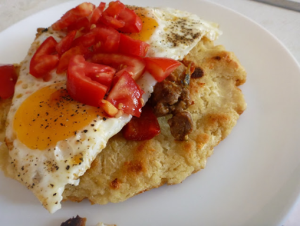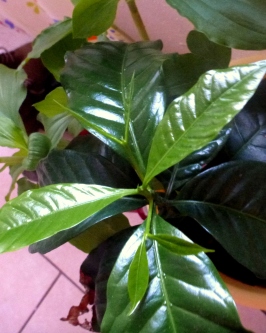Mexican Independence Day is not actually the day that Mexico was declared a free nation from Spain’s control. In fact, the date marks the anniversary of the beginning of a decade-long struggle for independence. It started with a cry of injustice from the famous priest Hidalgo (LINK) on the early morning of September 16th, 1810. He asked his countrymen to respond to the injustice of their brothers by breaking free from Spain’s control. The essential spirit of the message is:
“My children: a new dispensation comes to us today. Will you receive it? Will you free yourselves? Will you recover the lands stolen three hundred years ago from your forefathers by the hated Spaniards? We must act at once… Will you defend your religion and your rights as true patriots? Long live our Lady of Guadalupe! Death to bad government! Death to the Gachupines!”
In spite of Hidalgo’s inspiring words, Mexico was not declared an independent nation with ease. Eleven years of war and thousands of lives lost, but the Mexican voice rang throughout as it continues to do so. Mexico broke free from Spanish reign on September 28, 1821. This year, Mexico will be celebrating 192 years of freedom by listening to a cry of patriotism from the President of Mexico (LINK) which is based on the original speech from Hidalgo. Fireworks, bells, loud music, confetti, flags, and of course the national anthem will overflow from each and every main square all over Mexico and the Embassies of Mexico. The crowd will shout in a patriotic tone, ¡Viva México! ¡Viva México! ¡Viva México!
Join with us in celebration of this great nation’s independence by cooking one of the common dishes for this weekend: pozole. And in true Mexican nature this “recipe” prepares a lot of food, so invite a friend or 3 over to enjoy together in community. Pozole is the pho of Mexico; it is simple to make and the best part is the add-ins to your own personal bowl. It is hands’ down one of our favorite dishes of Mexico, believe it or not! No, it’s not quite Vitamin T – but we grab a bowl whenever we can. Also in true Mexican fashion, this is not really a recipe as much as it is a guideline. I included pictures below to help explain what things should look like. Experiment and see what works for you! You will likely be able to find everything you need in your local grocery story, and for the hominy just peek in the Mexican section and it should be available in cans.
Pozole Blanca
2 kg hominy, pre-cooked or semi-cooked
2 chicken breasts, whole, with bones
½ pound pork spine (?)
5 garlic cloves, whole
1 (or 1.5) onion, quartered
5 dried bay leaves
1 Tablespoon dried thyme
1.5 Tablespoons dried oregano leaves, not ground
3 T salt
2 cups Chili de arbol (optional)
3 additional cloves of garlic (optional)
1.5 teaspoons additional salt (optional)
Toppings: Radishes, iceberg lettuce, onion, ground oregano, homemade chili powder, avocado, and tostadas.
First thing is that you’re going to want to wash the hominy. It smells REALLY bad right out of the bag. Clean the hominy just as if you were cleaning dried beans. They should have no odor when they’re ready.

Then you’re going to put everything in the ingredient list into the largest pot you have in your house. No, I’m really not joking. This example wouldn’t be overdoing it. And now fill the pot with enough water to cover the ingredients and then have a good 3-ish inches more. Boil, covered at full heat for 5 hours. If you have more time, you can simmer (or crock-pot!) it for up to 10 hours on low. The longer it cooks, the better the flavor will be. In the meantime, you can prep your toppings.
If you’ve opted in for some pica follow these steps to make your own chili powder. The very first thing you need to do is create as much ventilation in your house as possible. I recommend using gloves when handling the chilies; you will need to cut or break off the green stems. Then, you dry roast these bad boys and this is where the ventilation becomes very important. The chilies will release their spice so if you’re highly sensitive to spicy things, this would not be a job for you! Continue to stir the chilies at medium-low heat. You’ll start coughing, but this is normal. If it becomes too much, remove from heat and take the pan outside and continue to stir to ensure that the chilies don’t burn. Breathe deeply and continue onto the next step.

Once you can breathe again, you’ll want to blend the chilies in with the additional garlic and salt. Grab a friend who will hold a kitchen towel over the lid of the blender to ensure that no spicy molecules get into the air. Blend until it is the consistency below y ya!

If you opted out of the spicy option, then you’re onto the fun toppings! Lettuce, radishes, and onion should be cut fairly small to integrate into the flavor of every delicious bite.

Once the meat is cooked, it should be removed from the soup. You will need to shred the chicken and pork into small pieces. Bones should be discarded. Put the meat back into the soup about an hour before meal time. At this time, you should begin picking out the larger pieces of onion, garlic cloves, and bay leaves. This is where a huge spoon comes in handy if you have one. Below is what it looks like when the soup is ready!

Dress your soup however you might like it – utilizing all or none of the toppings listed above. Enjoy with a cold beer or fresh margarita!

¡Buen provecho!
Con Amor,
Chelsea Elizabeth




























 for breakfast is simply the best. In Mexico, a typical breakfast is most likely leftovers or anything that falls under the category of Vitamin T: tamales, tacos, tortas, tlacoyos, tortillas, tequila or any typical Mexican food that starts with a T. [For the record, I have not had any tequila with breakfast… yet!] Actually, it’s really quite difficult to find any component of a typical American breakfast in a restaurant setting. To be honest though? I will take blackberry and queso tamales any day in lieu of eggs, bacon, and pancakes.
for breakfast is simply the best. In Mexico, a typical breakfast is most likely leftovers or anything that falls under the category of Vitamin T: tamales, tacos, tortas, tlacoyos, tortillas, tequila or any typical Mexican food that starts with a T. [For the record, I have not had any tequila with breakfast… yet!] Actually, it’s really quite difficult to find any component of a typical American breakfast in a restaurant setting. To be honest though? I will take blackberry and queso tamales any day in lieu of eggs, bacon, and pancakes. If you’re traveling in Mexico, you are probably interested in tourist attractions at a local, mexicano price. Asking at the hotel will get you signed up for the “best” tour company in the area, which is likely 200% more expensive than the local way. Asking a street vendor how to get to Destination X without purchasing anything will only get you a shrug or two. Now if you take a Mexican approach to the situation, all you have to do is be friendly and interested in the product or food available. You can ask about the history of the place or what makes the food specific to that region or how that product was hand crafted. Not only will you gain a deeper understanding of the region, you will likely be able to get the information you need to arrive safely and cheaply to your chosen destination.
If you’re traveling in Mexico, you are probably interested in tourist attractions at a local, mexicano price. Asking at the hotel will get you signed up for the “best” tour company in the area, which is likely 200% more expensive than the local way. Asking a street vendor how to get to Destination X without purchasing anything will only get you a shrug or two. Now if you take a Mexican approach to the situation, all you have to do is be friendly and interested in the product or food available. You can ask about the history of the place or what makes the food specific to that region or how that product was hand crafted. Not only will you gain a deeper understanding of the region, you will likely be able to get the information you need to arrive safely and cheaply to your chosen destination.









